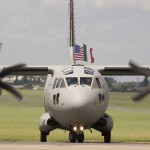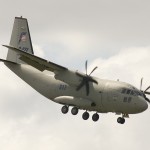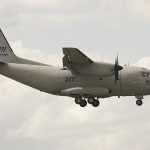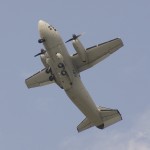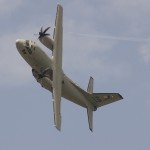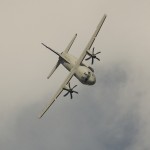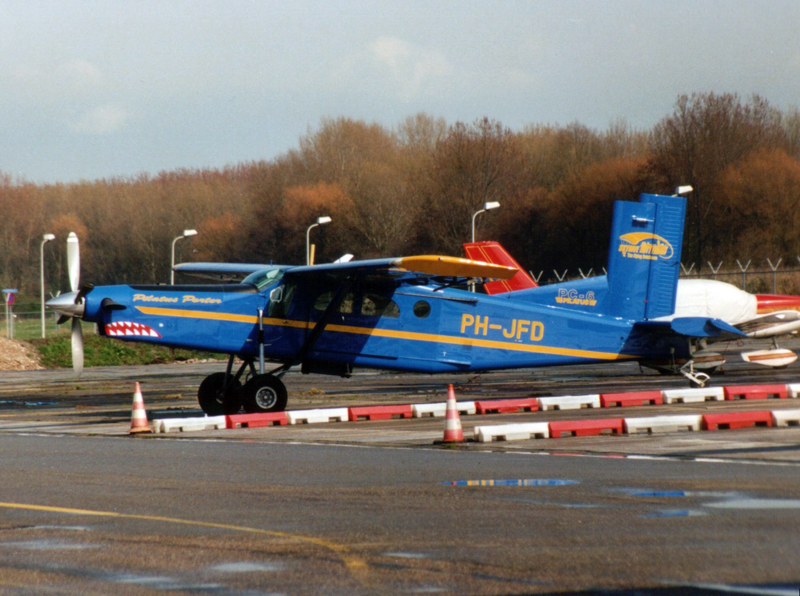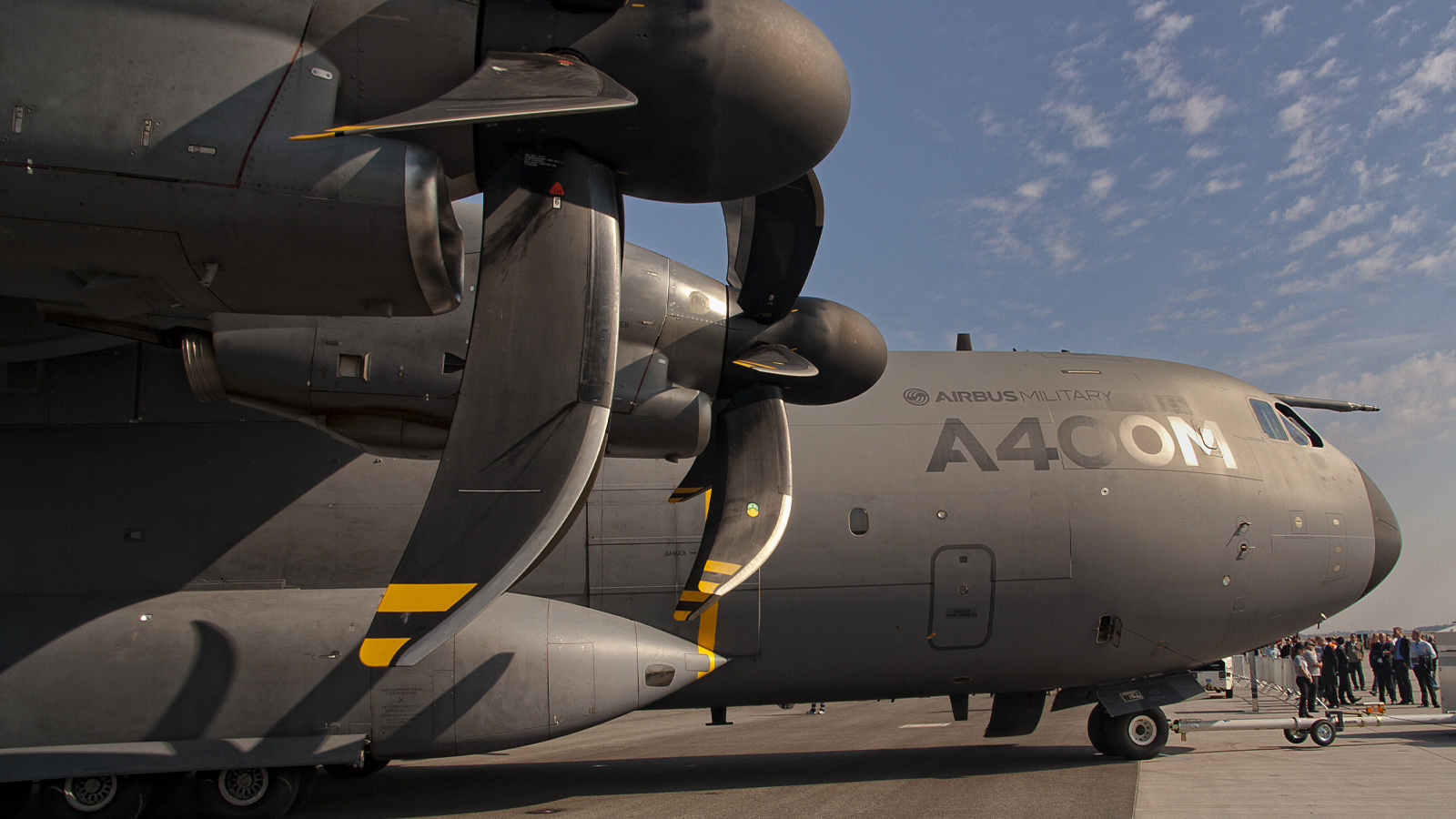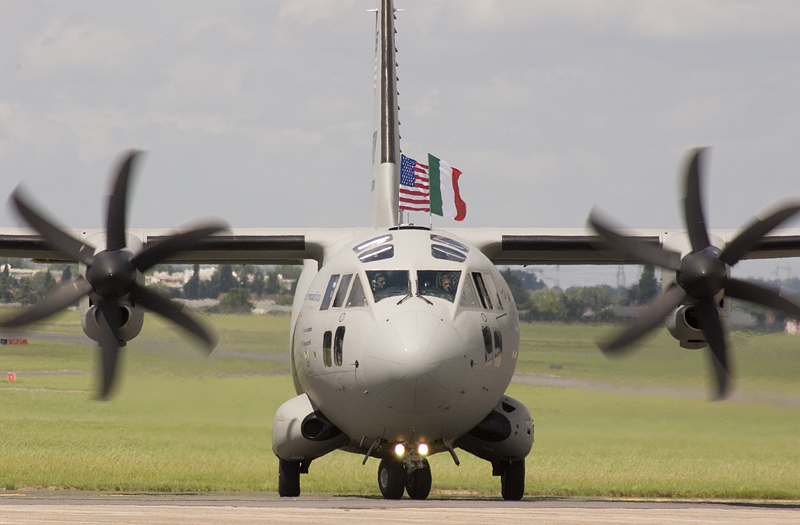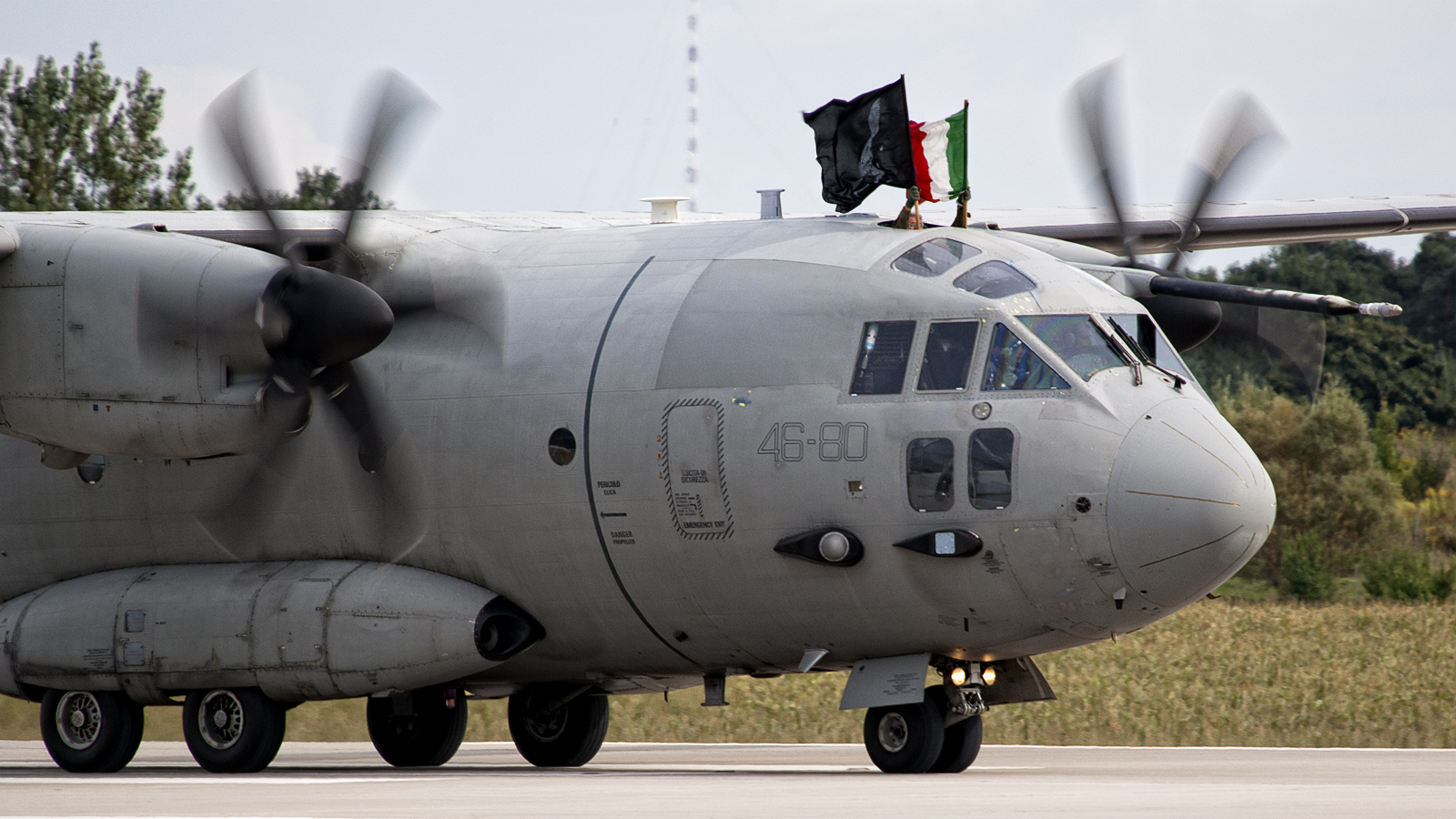
The Alenia C-27J Spartan is a twin-engine turboprop military aircraft designed and built for tactical transport and to support combat operations. It operates autonomously in remote and austere environments and can take off and land from unprepared surfaces and airstrips less than 610 m (2,000 feet). The C-27J is the best-selling twin turboprop military tactical airlifter in its category.
Developing nation: Italy.
Manufacturer/designer: Alenia.
Production Lines: Villanova d’Albenga, about 70 kilometers west of Genoa.
Type aircraft: Tactical transport.
First flight: 18 July 1970 as Aeritalia G.222 12 May 2000 first newly built C-27J.
First delivery: October 2006 Italy.
Produced: 2001 -present.
Developed from: Aeritalia G.222
Extremely maneuverable and versatile, the rugged C-27J boasts the highest power-to-weight ratio in its class, and the ability to perform fighter aircraft-like, 3.0g force maneuvers, enabling it to make tight turns, and climb and descend quickly. It can fly farther, faster and higher than any other twin engine military transport aircraft in its class.
The C-27J features the unique capability to vary cargo floor height and continuously adjust attitude, ensuring easy loading and unloading of large volume, high density payloads without ground support equipment as well as easy drive in/out of vehicles allowing their immediate operation.
Cargo handling commonality with the C-130 is one of the C-27J’s strongest marketing points, and the type’s ability to accommodate pallets loaded at up to 5,000kg promises a rapid transfer of loads between the aircraft. It is also capable of transporting two armoured light vehicles or a partially disassembled light helicopter.
The first prototype C-27J made its flight debut in 1999 and civil and military certification were received during 2001. The first production example to be delivered was handed over to launch export customer Greece in September 2005, with Athens expected to have nine of its 12 aircraft in use by year-end. Launch buyer Italy and Lithuania, meanwhile, accepted their first examples within the last six months, while Bulgaria’s first of five will follow during the last quarter of this year.
The USAF has been making extensive use of intra-theater transports, and even C-17s with their short-field landing capabilities, in order to reduce the number of road supply convoys in Iraq. The C-27J’s ability to use even shorter runways will expand the number of sites available for use in Iraq, Afghanistan, and other fronts of the war.
Operators
- Australia – Royal Australian Air Force has ordered ten C-27J aircraft with delivery to commence in 2015.
- Bulgaria – Bulgarian Air Force has three C-27J.
- Greece – Hellenic Air Force has eight C-27J.
- Italy – Italian Air Force has 12 aircraft in operation.
- Lithuania – Lithuanian Air Force has three C-27J.
- Morocco – Royal Moroccan Air Force has four aircraft.
- Mexico – Mexican Air Force has four C-27J
- Romania – Romanian Air Force has Seven C-27Js
- United States – United States Air Force has eight C-27Js in service. The Air National Guard has received 13 C-27Js.
Specifications (C-27J)
General characteristics
- Crew: Minimum two: pilot, co-pilot, (plus loadmaster when needed)
- Capacity: 60 troops or 46 paratroops or 36 litters with 6 medical personnel
- Payload: 11,500 kg (25,353 lb)
- Length: 22.7 m (74 ft 6 in)
- Wingspan: 28.7 m (94 ft 2 in)
- Height: 9.64 m (31 ft 8 in)
- Wing area: 82 m2 (880 sq ft)
- Empty weight: 17,000 kg (37,479 lb)
- Max takeoff weight: 30,500 kg (67,241 lb)
- Powerplant: 2 × Rolls-Royce AE2100-D2A turboprop, 3,460 kW (4,640 hp) each
- Propellers: 6-bladed Dowty Propeller 391/6-132-F/10, 4.15 m (13 ft 7 in) diameter
Performance
- Maximum speed: 602 km/h (374 mph; 325 kn)
- Cruising speed: 583 km/h (362 mph; 315 kn)
- Minimum control speed: 194 km/h; 121 mph (105 kn)
- Range: 1,852 km (1,151 mi; 1,000 nmi) with 10,000 kilograms (22,000 lb) payload
- Range at 6,000 kg payload: 4,260 km (2,650 mi; 2,300 nmi)
- Ferry range: 5,926 km (3,682 mi; 3,200 nmi)
- Service ceiling: 9,144 m (30,000 ft)
All pictures courtesy of Zijde Aviation Photo and Publishing, Rob Vogelaar en Marcel van Leeuwen









